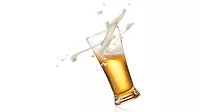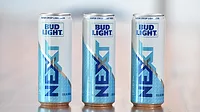2020 State of the Beverage Industry: Recent shifts in shopping patterns lift beer market
Flavored malt beverage segment driven by hard seltzers

One interpretation of alternative rock band 311’s hit single “All Mixed Up” is that it highlights the cognitive dissonance that people can feel when achieving the stardom they had long strived to achieve. Prior to consumer stockpiling as a result of the coronavirus pandemic, one might have described the U.S. beer market’s performance as “all mixed up.”
In Beverage Industry’s March issue, data from Chicago-based Information Resources Inc. (IRI) showed single-digit case sale declines for the domestic beer and hard cider segments, steady single-digit growth for imported beer and double-digit growth for non-alcohol beers and flavored malt beverages (FMBs).
However, more recent sales data from IRI show that the overall beer market and the majority of its segments and sub-segments are posting strong sales numbers.
For the 52 weeks ending May 17 in total U.S. multi-outlets and convenience stores, the U.S. beer market saw dollar sales exceed $39.4 billion, a 10 percent increase, while case sales topped 1.5 billion, a 6.7 percent increase, according to IRI data.
According to IRI data, dollar sales within the beer category were lifted by nearly every segment with domestic beer up 3.8 percent (totaling more than $25.9 billion), imported beer up 9.5 percent (totaling more than $7.8 billion), FMBs up 65.2 percent (totaling $4.9 billion), hard cider up 1.1 percent (totaling $443 million) and non-alcoholic beer up nearly 40 percent (totaling $149 million).
Domestic beer’s sub-segments, which IRI defines as domestic premium, domestic super-premium, domestic sub-premium and craft, all helped lift the overall beer segment. Domestic premium dollar sales were relatively flat (totaling $12.3 billion), but all other sub-segments showed reasonable growth. Domestic premium was up 15.5 percent (totaling $3.5 billion), domestic sub-premium increased 3.5 percent (totaling $5.4 billion) and craft was up 6.7 percent (totaling $4.5 billion).
(Individual brands)
| DOLLAR SALES | % CHANGE VS. PRIOR YEAR | CASE SALES | % CHANGE VS. PRIOR YEAR | |
| Bud | $7,013,403,105 | -1.7 | 325,358,935 | -2.2 |
| Michelob | $2,739,355,325 | 21.6 | 100,325,424 | 20.1 |
| Coors | $2,553,263,989 | 2.5 | 119,701,247 | 1.4 |
| Miller Lite | $2,116,163,729 | 4.9 | 100,818,735 | 4.2 |
| Busch | $1,541,127,755 | 6.1 | 94,801,813 | 4.6 |
| Category total* | $25,981,112,682 | 3.8 | 1,164,038,949 | 2.2 |
*Includes brands not listed.
Source: Information Resources Inc. (IRI), Chicago. Total U.S. supermarkets, drug stores, gas and convenience stores, mass merchandisers, military commissaries, and select club and dollar retail chains for the 52 weeks ending March 22.
This turnaround likely was due to consumer stockpiling as a result of the coronavirus. According to a March 19 report titled “COVID-19 Impact: Consumer Spending Tracker” comprised by IRI and the Boston Consulting Group (BCG), domestic beer/ale (including non-alcoholic) was up 10.1 for the week ending March 8, while imported beer/ale (including non-alcoholic) was up 13.1 percent during the same timeframe.
These patterns continued as domestic beer/ale including alcohol-free varieties were up 22 percent for the period ending March 15. Meanwhile, imported beer/ale, including alcohol-free varieties, was up 18.9 percent. For the week ending March 22, domestic beer/ale, including alcohol-free varieties, was up 33.2 percent, and imported beer/ale, including alcohol-free varieties, saw a 27.5 percent climb.
Although recent events might have bolstered the domestic beer market, imported beer has regularly been outperforming the overall beer market.
(Brand family)
| DOLLAR SALES | % CHANGE VS. PRIOR YEAR | CASE SALES | % CHANGE VS. PRIOR YEAR | |
| Modelo | $2,561,507,870 | 22.7 | 80,332,484 | 19.8 |
| Corona | $2,556,323,514 | 6.3 | 76,299,418 | 4.6 |
| Heineken | $809,464,377 | 2.1 | 24,378,179 | 0 |
| Dos Equis XX | $390,482,523 | 2.6 | 12,029,008 | 1.5 |
| Stella Artois | $386,205,381 | 3.5 | 10,661,398 | 2.6 |
| Category total* | $7,879,739,138 | 9.5 | 246,059,789 | 7.2 |
*Includes brands not listed.
Source: Information Resources Inc. (IRI), Chicago. Total U.S. supermarkets, drug stores, gas and convenience stores, mass merchandisers, military commissaries, and select club and dollar retail chains for the 52 weeks ending March 22.
“The largest draw to imported beers is the varying styles when compared with domestically produced brands,” said Chris Lombardo, senior analyst and team lead for Los Angeles-based IBISWorld, in Beverage Industry’s March issue. “While this has begun to change, as large and small breweries incorporate new varieties into their catalogues, consumers enjoy discovering new and niche international brands that offer different flavor palates than what they may be used to in the U.S.”
However, exploration of beer styles is not the only factor impacting the performance of imported beer.
“While its impact varies, the value of the U.S. dollar generally has some level of influence over imports,” Lombardo explained. “When the value of the U.S. dollar increases, imports tend to increase, as many international products become relatively less expensive. Conversely, when the value of the U.S. dollar decreases, import growth tends to slow or decrease altogether. The value of the U.S. dollar has a minimal effect on industry imports. Still, a significant shift in the value of the U.S. dollar compared with its major trading partners impacts industry trade.”
Brian Sudano, managing partner at New York-based Beverage Marketing Corporation (BMC), noted that import beers also evoke emotional cues with consumers.
“Imported beer comes with the imagery and emotional attachment associated with its origin (e.g., Corona equals beach, sun and sand in Mexico),” he said.
Meanwhile the product can act as connection to its place of origin through its taste profile. “Imported beer generally takes on the local characteristics of beer in the international markets,” Sudano said. “Generally, European beers are more bitter.”
(Individual brands)
| DOLLAR SALES | % CHANGE VS. PRIOR YEAR | CASE SALES | % CHANGE VS. PRIOR YEAR | |
| White Claw Hard Seltzer | $1,293,458,970 | 334.4 | 37,924,870 | 327.1 |
| Truly | $528,629,990 | 193.1 | 16,773,153 | 194.3 |
| Twisted | $417,236,778 | 23 | 12,750,312 | 21.2 |
| Smirnoff | $396,539,955 | 22.5 | 10,801,780 | 19.6 |
| Mike's Harder | $353,935,449 | 12.7 | 10,158,025 | 9.5 |
| Category total* | $4,939,863,547 | 65.2 | 147,415,723 | 63.3 |
*Includes brands not listed.
Source: Information Resources Inc. (IRI), Chicago. Total U.S. supermarkets, drug stores, gas and convenience stores, mass merchandisers, military commissaries, and select club and dollar retail chains for the 52 weeks ending March 22.
Yet, the U.S. beer market is embracing a new look at it delves into the “beyond beer” arena. “The market is at an inflection point,” Sudano said. “Major brewers are investing heavily in ‘non-traditional’ beer innovation such as hard seltzer and other flavored offerings. This is accelerating the alternative beer (malt) market at the expense of traditional beer that will likely result in greater declines for traditional beer.”
Driving much of that switch has been the growth of hard seltzers. For example, White Claw Hard Seltzer, a brand Chicago-based Mike’s Hard Lemonade Co., saw dollar sales exceed $1.2 billion, approximately a 334 percent increase, and case sales north of 37 million, a 327 percent increase.
Earlier this year, White Claw released its Flavor Collection No. 2, including three brand new flavors — Tangerine, Watermelon and Lemon — the first flavors debuted by the brand in more than a year. The new flavors join White Claw Mango in a 12-pack Variety Pack that is available at retailers nationwide.
Looking for a reprint of this article?
From high-res PDFs to custom plaques, order your copy today!






